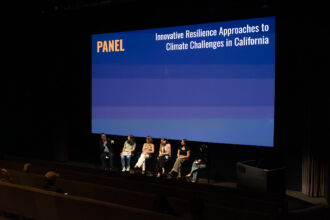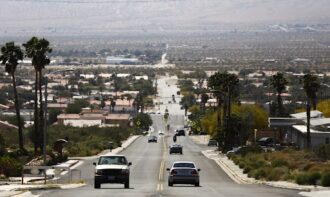Travel Log by Bryn: Part IV
7: Tokyo Cool Pavement
Flashback to geography class: there are 360 lines of longitude around the world going east to west, or vice versa. So far on this trip, we traveled eastward through the Middle East to get to India, meaning that we’d traveled through over 190 lines of longitude already, which is more than halfway around the world. We decided to make the long trip all the more worth it and keep going the rest of the way around the world, this time stopping in Tokyo before continuing east across the Pacific Ocean back home to LA.

Climate Resolve first learned of Tokyo’s cool pavement program last year—Tokyo has plans to coat its entire Olympic marathon route with cool pavement before the Summer 2020 games. At that time, we set up a web exchange with the Tokyo Municipal Government, the Tokyo Olympics organizers, and our partners at the City of Los Angeles Bureau of Street Services, the Mayor’s Sustainability Office, and members of the LA Olympics organizers. We were impressed to learn that 116 kilometers of cool pavement had already been installed in Tokyo, and they were on track to hit their target of 136 kilometers before the summer of 2020. For you imperial unit people, that’s 84.5 miles, compared to Los Angeles’ 1 mile of installed cool pavement at the time. Even more impressive, Tokyo’s cool pavement was achieving 10ºC (which is about 18ºF) surface temperature cooling even after 10 years of being installed, whereas the best that LA’s cool pavement was achieving was about 12ºF, and its effectiveness seemed to be diminishing with time, even after only two years of being applied.
Determined to try to figure out the keys to Tokyo’s success, we set up meetings with the Tokyo Municipal Government’s road division, its urban heat mitigation group, its pseudo-independent research institute for environmental protection, as well as the National Research and Development Agency, NIPPO (a leading Japanese pavement manufacturer) and the Japanese Pavement Society.
It was neat to get the opportunity to ask lots of questions about why Tokyo has been applying cool pavement differently than Los Angeles does (grinding the street first and then spraying on a coating vs. LA’s pour and squeegee approach), how they settled on the desired pavement color (they’re using a medium-color grey, even though a lighter grey is available), and the tests that they put cool pavement products through before and after applying them to the roads.
We toured a number of different cool pavement installation sites throughout different parts of Tokyo. I can verify: it’s all over the place!
Installing cool pavement has become part of Tokyo’s normal way of doing road repair. I look forward to getting the City of LA to that point, too!


















